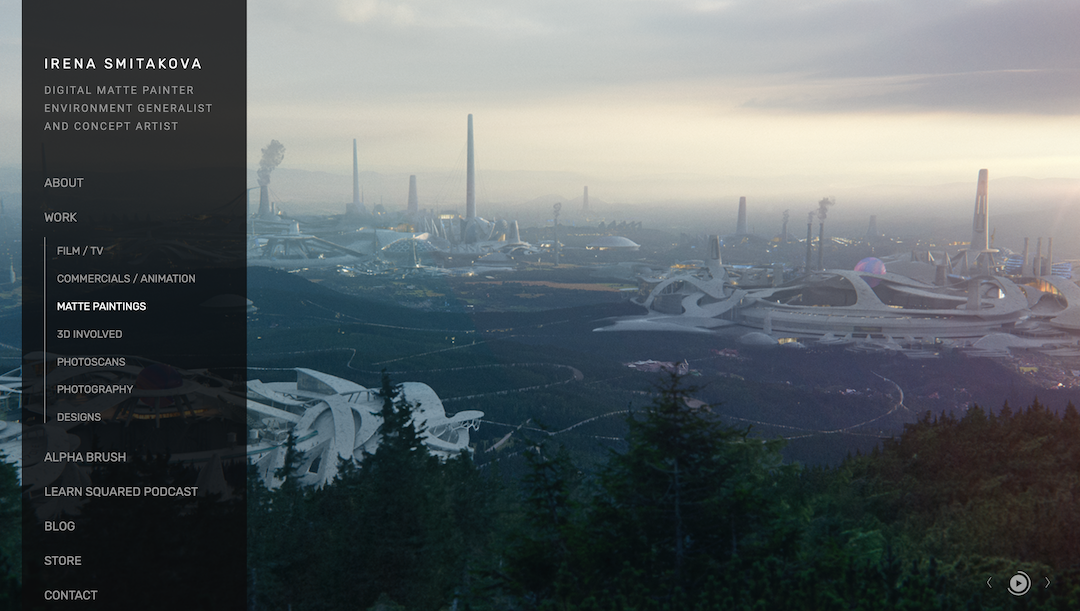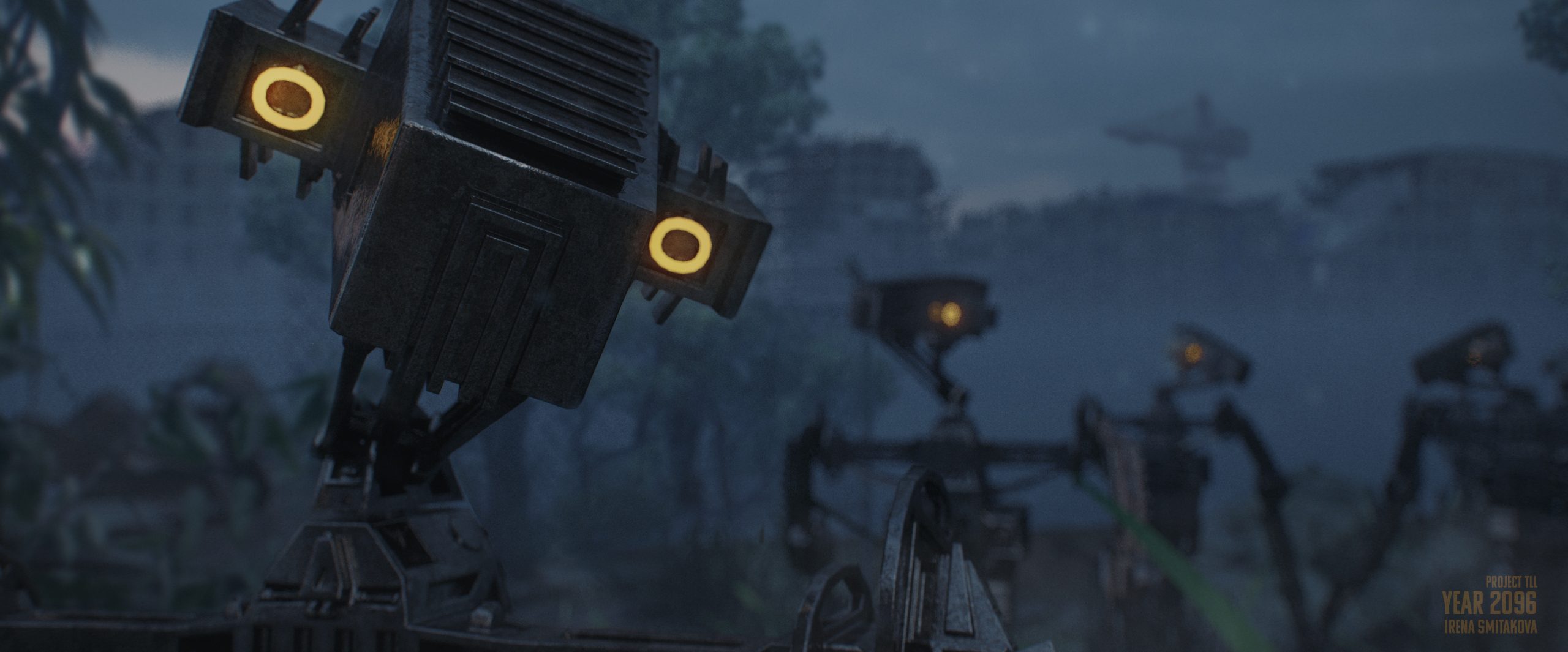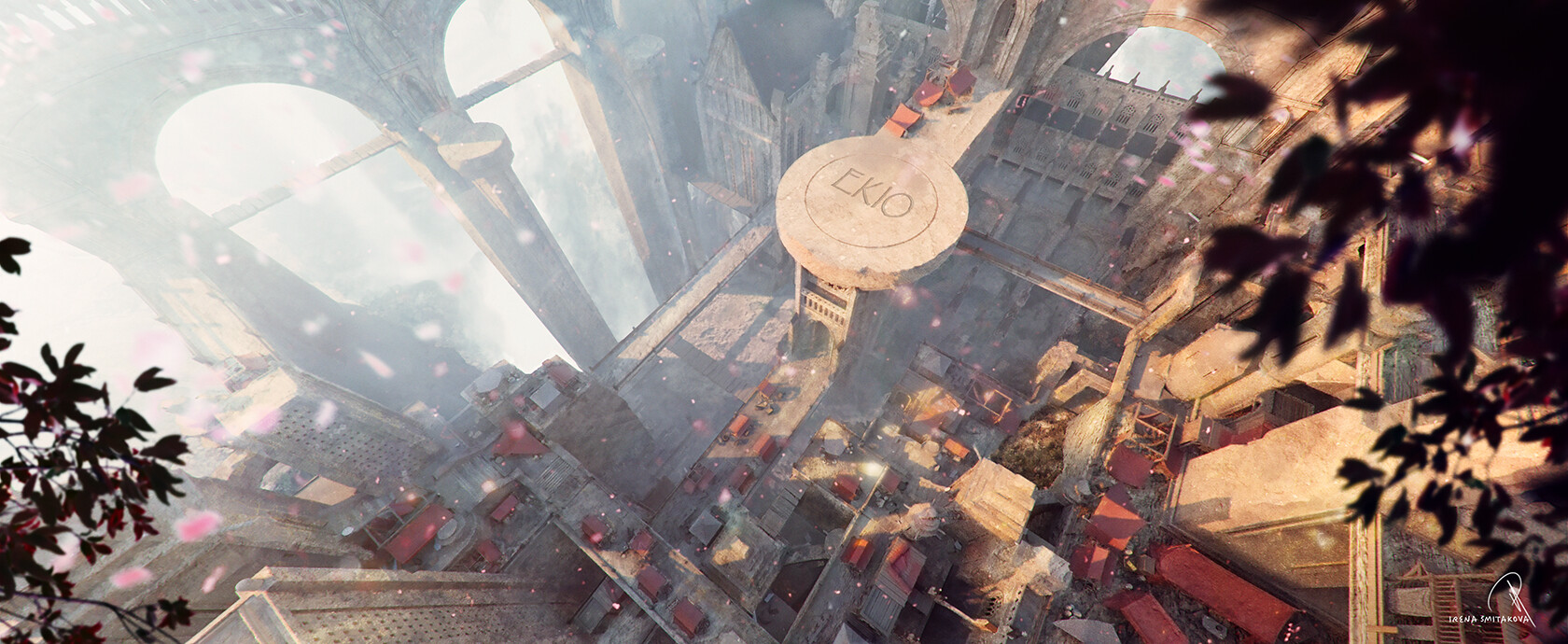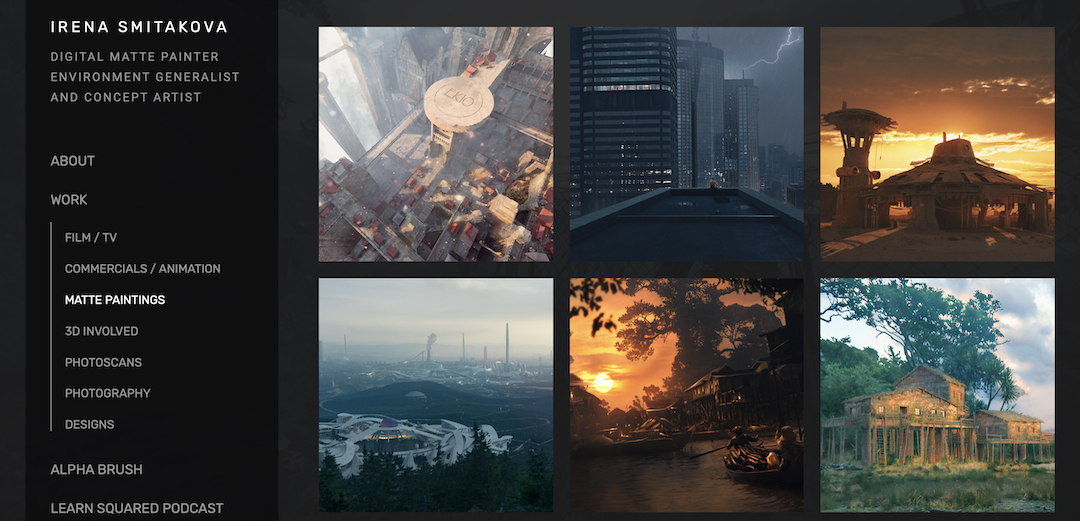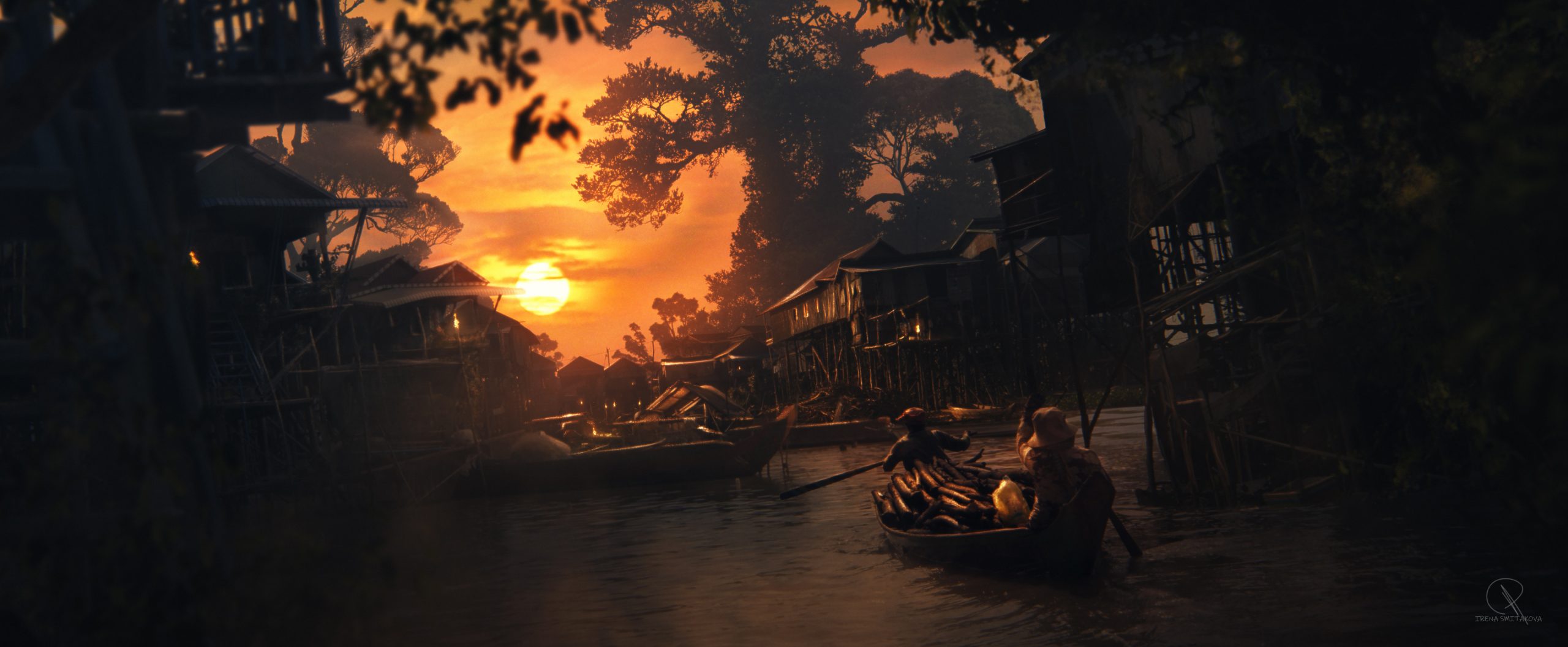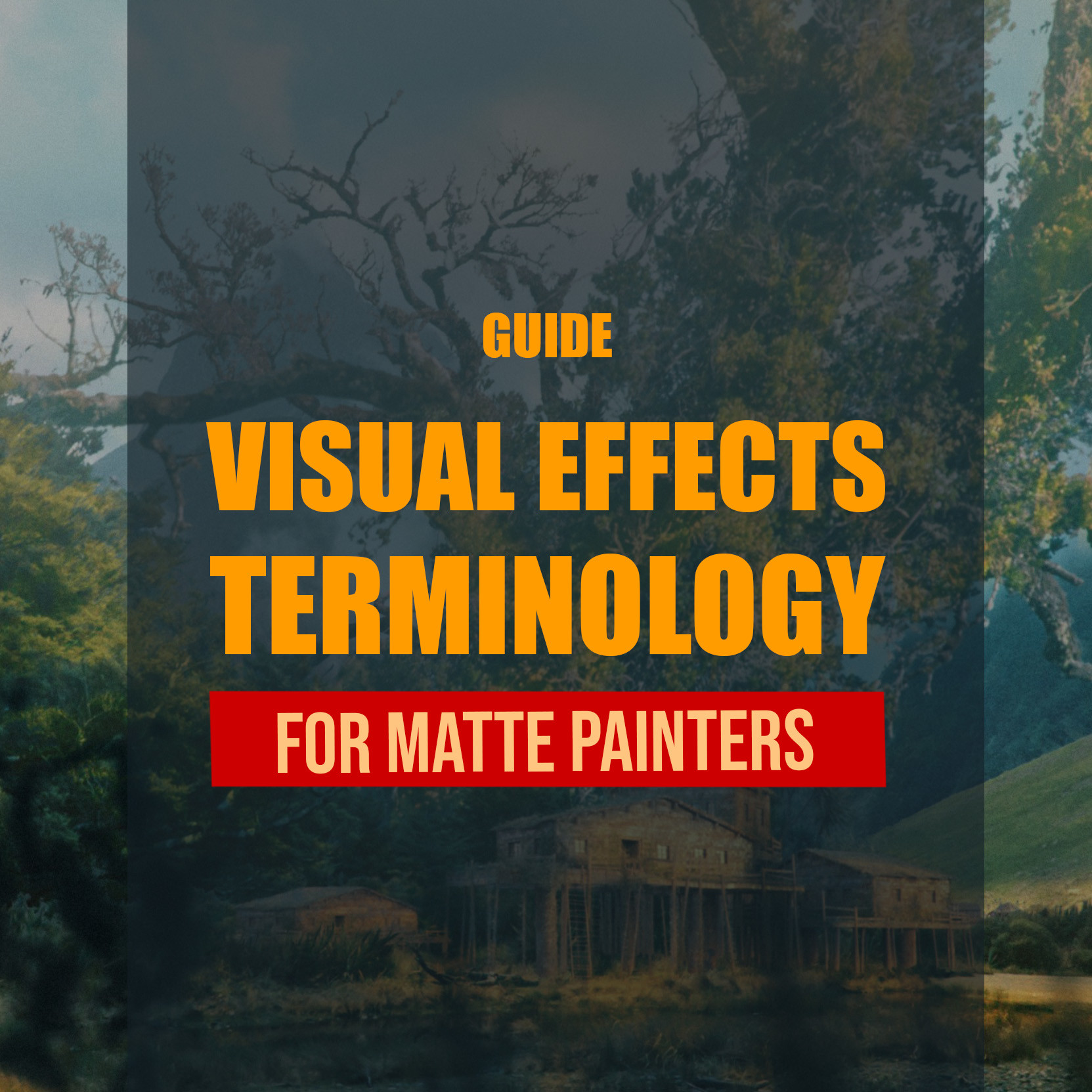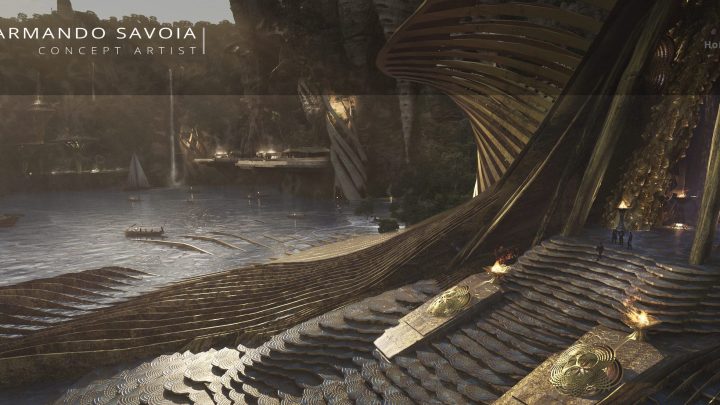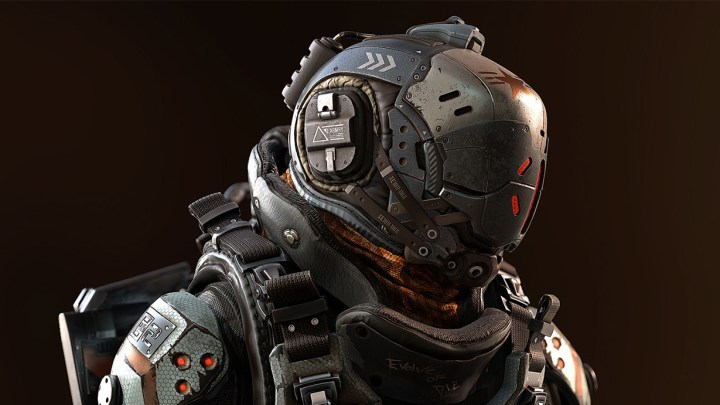Featured Pro Portfolio: Irena Šmitáková
Irena Šmitáková is a Digital Matte Painter and Environment Artist originally from the Czech Republic. Since graduating from university in 2017, she’s worked on numerous film and TV projects including The Lion King, The Call of the Wild, Artemis Fowl, Good Omens, Rebecca, and Intergalactic. Some of her other commercial clients have included MPC, Milk VFX, and Red Knuckles. Today, she is working as Environment TD at Framestore London while also building an affordable learning resource for matte painters and environment artists through Alpha Brush.
We spoke with Irena to learn more about what it’s like to work on major motion picture and television productions. We’ve also linked to two of Irena’s free guides for matte painters at the end of the article!
When did you first decide to work in the film and TV industry?
The idea of doing something with film and VFX crossed my mind after seeing Pacific Rim back when I was around 16 or 17, but it was just a thought of how cool it would be to do such a job…I didn’t think I would actually do it one day.
I have been interested in art since 2007 and studied art and photography at secondary school in the Czech Republic. I started liking motion pictures more than stills so I experimented with filming documentaries and short stories. I officially started studying VFX in 2015, when I decided to go to the University of South Wales in Cardiff. At first I wanted to be a compositor, but then I discovered matte painting and environment creation and I knew immediately that this is what I wanted to do.
What are essential skills for someone with your career?
Certainly knowing art fundamentals along with being a problem solver and having the ability to adapt to a new task are essential.
Also, it is important to learn to ask your colleagues for help if you are stuck. Colleagues and friends in the studio are always more than happy to help. I love the variety of challenges my job brings me and the responsibilities that are assigned to me, but mainly I love working with people.
What do you think is one of the largest obstacles for artists in your industry today?
It’s a very competitive industry full of entry-level artists wanting to get in. With the amount of applicants, your portfolio/demo reel really needs to stand out. What I see very often though is that people’s portfolios are missing the fundamentals such as a thorough knowledge of perspective, composition, and light.
Then of course you have to combine this with the technical knowledge of software, which for digital matte painting includes Nuke, Photoshop, and 3D software such as Maya or Houdini. Environment art additionally includes ZBrush, Mari/Substance, Clarisse, 3Ds Max, World Machine/Terragen, and so on, depending on where you are applying. This brings me to the fact that it is challenging to learn this large amount of packages. I always say to be patient, keep practicing, and you will get there.
Always be open to learning, set your goal and dedicate yourself to it, but more importantly, prioritize your mental health.
Your ArtStation website offers a well-designed introduction to your professional work. Do you have tips for people looking to build their own portfolio?
I think I am going to repeat myself and say what other professionals say, which is: always focus on quality rather than quantity. When studios see your entry-level or junior portfolio they do not care so much about how long it took you to get that piece done or how many works you got done in a week, but rather they care about what the final result looks like.
Another thing I would say is to educate yourself a bit in marketing and learn how to sell your work. Allan McKay covers great tips on his YouTube channel, as do many artists who were on the Learn Squared Podcast or The Art Department Podcast. Listen to those and be inspired by their stories and career paths.
Find a portfolio/website that you like and take inspiration from it. Do not copy it, just take a look around all the tabs and see how that certain artist presents themselves.
What sorts of projects do you have on the horizon?
I am working on my KitBash 3D series, where I decided to use their kits in every single artwork. In addition to that, I challenge myself to create each artwork in different software, using different techniques and learning a new way to build a scene. This is also preparation for a new series I have had in mind for quite some time, but more about that later.
Alpha Brush is slowly moving online along with a new guide focusing on creating 3D environments. I decided to have it as a little fun blog with tutorials and some tips, which hopefully the readers will enjoy and find helpful. They also can find photo reference packs which I have been putting together over the last year.
Through Alpha Brush, you’ve written two free guides for matte painters. Can you tell us more about what inspired you to do so?
When I started, I tried to research all that I needed to know in order to become a matte painter. Later, when I was at MPC as a Junior 3D DMP artist, I decided to write a guide for anyone who wants to get into VFX as a matte painter. It covers all the information you need to know as an entry-level artist. Currently I am working on an updated version of this guide for 2021/2022, as the industry is fast-moving and there certainly is some information that will need to be updated.
Irena’s free guides on becoming a matter painter and visual effects terminology for matter painters
See more of Irena’s work on her portfolio website.
Find out more about ArtStation premium websites here.
Read more ArtStation Pro Portfolio interviews here.
